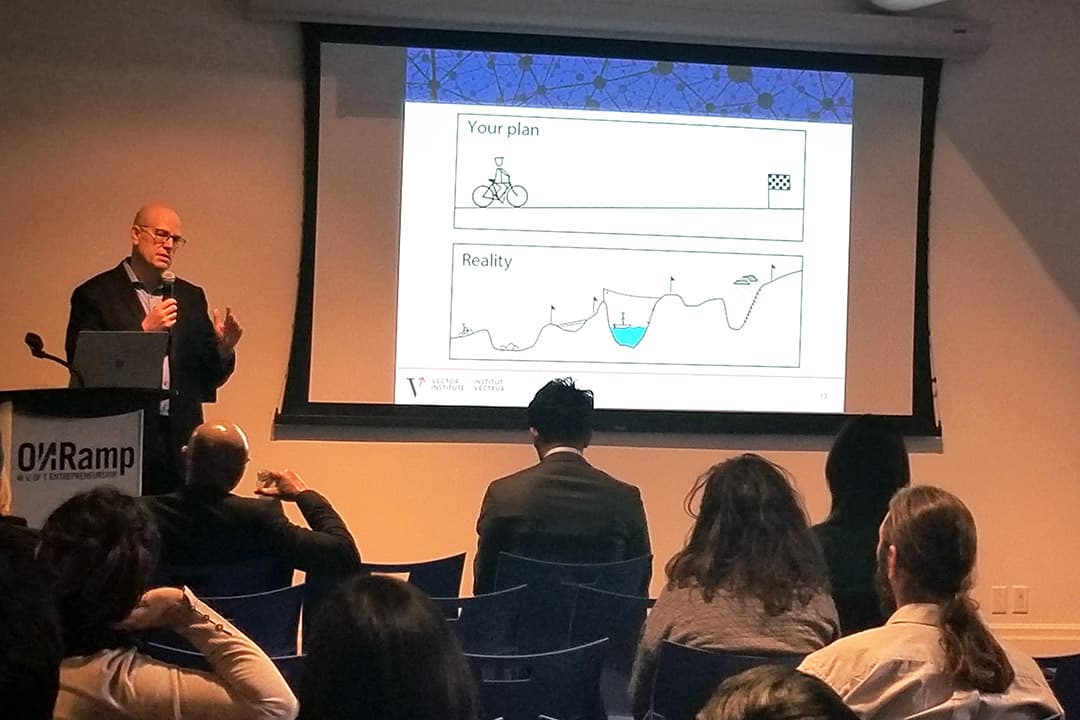Life as an entrepreneur is often a far cry from the rocket-like spring to success that Steve Jobs and various other lucrative garage-based startups have experienced. The reality is evident in that very few new startups succeed beyond initiation — far from the Hollywood fantasy many of us think of.
During U of T’s Entrepreneurship Week, the Vector Institute’s Chief Commercialization Officer and Vice-President Industry Innovation Cameron Schuler gave a talk on the reality of being an entrepreneur, which was called “When things don’t go as planned…Murphy’s Law in Action.” Schuler shared the highs and lows of his many past entrepreneurial ventures to show that success is anything but easy.
Trials, tribulations, and technology
Schuler said that less than 25 per cent of entrepreneurs who launch a startup are likely to succeed, and the same is true for their second time around. He said that luck is a big factor — most startups don’t follow a straight path to success. Many times, entrepreneurs face the harsh challenges of running a startup: it consumes time one would otherwise have for their personal life, family, and hobbies.
He was clear that these facts weren’t meant to deter entrepreneurs — this is just the reality.
Many times we assume that coming up with technical aspects of products is the hardest part. Wrong. According to Schuler, it’s turning a profit and convincing others to invest in you. “The hardest thing you will ever do is generate revenue; I don’t care how hard the technical problems are,” he said.
We also often assume that the market will automatically adopt technology that can automate certain aspects of life and work, but history has time and time again proven this conception false. For example, Alexander Graham Bell’s invention of the telephone had little fanfare at first — people thought it was dangerous.
Better may not always be for the best
Schuler also questioned why many entrepreneurs tend to gravitate toward making something without any market need for it. For example, though there are 4,400 patents for mouse traps, only two dozen of them have procured profit on the US market. Schuler highlighted the importance of designing the product for the customer, as the success of a technical solution depends on how well it is received.
Schuler finished by saying that all of his endeavours were formative experiences, and they provided him with the knowledge that he has today.
Let his words be a lesson to future entrepreneurs: the journey is harder than you may think and the challenge may not always be in designing a technical solution, but in designing a practical solution and convincing the market of its value.


